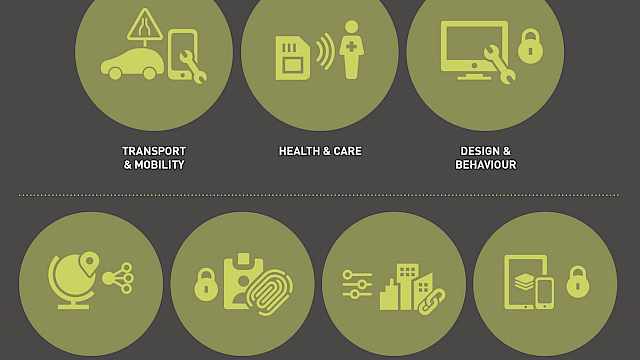The background
Intelligence-led policing (ILP) uses intelligence to inform decision-making and direct law enforcement activities, and emerged in the 1990’s as agencies realised a more targeted approach was needed to tackle offenders and reduce crime (Ratcliffe, 2003; Tilley, 2008). However, the criminal landscape was transformed in the 21st Century as globalisation (Caparini, 2022) and technological advances have allowed offenders, commodities and information to travel physically and virtually with greater ease (Deloitte, 2018). Crime has become increasingly transnational.
It remains difficult for offenders to commit crime without leaving physical and electronic traces. These traces can be captured in various ways, including diverse camera systems (e.g., CCTV, ANPR), banking transactions, and communication mediums (e.g., texts, social media). However, capturing relevant and timely information is no easy task when it’s held in different regions and countries, by different agencies, in different formats and on different systems. Multiple public inquiries worldwide have criticised law enforcement communication and intelligence failures, whereby critical information has not been communicated with partner agencies (or in a timely manner) and has resulted in the failure to prevent or effectively respond to an incident (i.e., Bichard, 2004; Manchester Arena Inquiry, 2022; Peters, 2023). Globally, billions of pounds have been spent in response (e.g., developing new agencies or technology; National Audit Office, 2021; Taylor & Russell, 2012), yet the problem persists.
...capturing relevant and timely information is no easy task when it’s held in different regions and countries, by different agencies, in different formats and on different systems.
Previous studies to explain barriers to information sharing have highlighted culture (i.e., trust; Joyal, 2012), procedure (i.e., sharing protocols and legislation; van Staden et al., 2011) and technical issues (i.e., incompatibility, cost; Hollywood & Winkelman, 2015). However, this insight has remained at a general level, generated from the assumption that information sharing is conducted in the same way, no matter what agency or information is involved.
International law enforcement information exchange
My UK Research and Innovation Future Leaders Fellowship looks to test some of these assumptions by exploring how international law enforcement agencies exchange information (www.ilex.ac.uk). Initially focusing on the UK, our research has established that the type of information being exchanged (i.e., tactical vs strategic) and the information recipient (i.e., outside the agency peer group such as an international entity or NGO) influences the nature of communication (see Phythian et al., 2024). Four ways in which information is shared, from most to least used are:
- Inform and request: an agency representative will (formally or informally) highlight information and ask whether another agency has further information.
- Meet and share: an information sharing partnership is created between trusted and invited agencies. Here representatives meet (physically or virtually) to provide information on subjects of mutual interest while maintaining exclusive access to their systems (i.e., Multi Agency Safeguarding Hubs).
- Customised database: collaborating agencies use a bespoke database to pool information. Such systems are isolated from other organisational operating systems and enable partners to interrogate the information however they wish (i.e., the organised crime group mapping system).
- Integrated systems: an agency can directly view, in real time, another agency’s data/system – or part of it (i.e., the Police National Database [PND]).
My research has revealed that an ‘inform and request’ approach, despite being used most, is least effective and efficient as it is resource intensive and personality driven. In contrast, an ‘integrated systems’ approach was the least frequently used even though the technology exists to link diverse databases and use algorithms to automatically flag criminal patterns and active offenders. Yet, despite being the purest approach to multi-agency working, practitioner reluctance remains to sharing information in this way. These findings appear consistent in Australia too (Phythian & Kirby, forthcoming).
The importance of this research
Stock (2023) mirrors the concerns of many commentators when he highlights the current “global security crisis” associated with an “epidemic of transnational organised crime”. How can offenders who exploit the jurisdictional ownership and diverse information silos of fragmented law enforcement agencies be more effectively and efficiently tackled? There appears significant scope for law enforcement agencies to improve information management. The technology exists to integrate systems to provide a more holistic understanding of crime patterns and offender behaviour. They also reduce administrative burden (i.e., double keying) while maintaining security (i.e. access, audit trail), enabling agencies to determine which information to access and analyse, how and when. Information is communicated almost instantaneously. The PND is an example of this. Yet, despite the benefits of the system and its capabilities being recognised, it’s not used to its full potential and practitioner hesitancy remains (Phythian & Kirby, 2022). This emphasises the importance of considering all aspects of this process (i.e., cultural change and technology implementation), as well as the need for evidence to inform policy and practice to ensure investment and resources are used in the most beneficial and productive way.
Read more
Read more:
Brown, R. (2018). Understanding law enforcement information sharing for criminal intelligence purposes (No. 566). Australian Institute of Criminology Trends and Issues in Crime and Criminal Justice. https://www.aic.gov.au/sites/default/files/2020-05/ti_le_information_sharing_2018.pdf
Caparini, M. (2022, September 2). Transnational organized crime: A threat to global public goods. Stockholm International Peace Research Institute. https://www.sipri.org/commentary/topical-backgrounder/2022/transnational-organized-crime-threat-global-public-goods
Kirby, S., & Keay, S. (2021), Improving Intelligence Analysis in Policing. Routledge.
Phythian, R., & Kirby, S. (2022). What does the UK Police National Database tell us about the future of police intelligence? Policing: A Journal of Policy and Practice, 17, 1-14. DOI: 10.1093/ police/paac074.
Phythian, R., Kirby, S., & Swan-Keig, L. (2024). Understanding how law enforcement agencies share information in an intelligence-led environment: how operational context influences different approaches. Policing: An International Journal. DOI: 10.1108/PIJPSM-06-2023-0073.
Stock, J. (2023, November 27). There is an epidemic of transnational crime. We need a global response. The Guardian. https://www.theguardian.com/commentisfree/2023/nov/27/rise-international-organized-crime
In-text references:
Bichard, M. (2004). The Bichard Inquiry. HMSO. https://dera.ioe.ac.uk/id/eprint/ 6394/1/report.pdf.
Caparini, M. (2022, September 2). Transnational organized crime: A threat to global public goods. Stockholm International Peace Research Institute. https://www.sipri.org/commentary/topical-backgrounder/2022/transnational-organized-crime-threat-global-public-goods
Deloitte (2018). Policing 4.0: Deciding the Future of Policing in the UK. https://www2.deloitte.com/content/dam/Deloitte/uk/Documents/public-sector/deloitte-uk-future-of-policing.pdf
Hollywood, J. S., & Winkelman, Z. (2015). Improving Information Sharing Across Law Enforcement: Why Can’t We Know? RAND Corporation. http://www.rand.org/pubs/research_reports/RR645.html
Joyal, R. G. (2012). How far have we come? Information sharing, interagency collaboration, and trust within the law enforcement community. Criminal Justice Studies, 25(4), 357-370. DOI: 10.1080/1478601X.2012.728789
Manchester Arena Inquiry (2022). Manchester Arena Inquiry Volume 2: Emergency Response. https://assets.publishing.service.gov.uk/media/6363d113e90e0705a7012946/_HC_757-II__-_Manchester_Arena_Inquiry_Report___Volume_2__Volume_2-II_.pdf
National Audit Office (2021). The National Law Enforcement Data Programme. https://www.nao.org.uk/wp-content/uploads/2021/09/The-National-Law-Enforcement-Data-Programme.pdf
Peters, G. (2023). Planned in Plain Sight: A review of the intelligence failures in advance of January 6th, 2021. United States Senate Committee on Homeland Security & Governmental Affairs. https://www.hsgac.senate.gov/wp-content/uploads/230627_HSGAC-Majority-Report_Jan-6-Intel.pdf
Phythian, R., & Kirby, S. (2022). What does the UK Police National Database tell us about the future of police intelligence? Policing: A Journal of Policy and Practice, 17, 1-14. DOI: 10.1093/ police/paac074.
Phythian, R., Kirby, S., & Swan-Keig, L. (2024). Understanding how law enforcement agencies share information in an intelligence-led environment: how operational context influences different approaches. Policing: An International Journal. DOI: 10.1108/PIJPSM-06-2023-0073.
Ratcliffe, J. (2003). Intelligence-led Policing (No. 248). Australian Institute of Criminology Trends and issues in crime and criminal justice. https://www.publicsafety.gc.ca/lbrr/archives/cnmcs-plcng/cn35747-eng.pdf
Stock, J. (2023, November 27). There is an epidemic of transnational crime. We need a global response. The Guardian. https://www.theguardian.com/commentisfree/2023/nov/27/rise-international-organized-crime
Taylor, R.W., & Russell, A.L. (2012). The failure of police ‘fusion’ centers and the concept of a national intelligence sharing plan. Police Practice and Research, 13(2), 184-200, DOI: 10.1080/15614263.2011.581448
Tilley, N. (2008). Modern approaches to policing: community, problem-oriented and intelligence led. In T. Newburn (Ed.), The Handbook of Policing (pp. 373-403), Willan Publishing.
van Staden, L., Leahy-Harland, S., & Gottschalk, E. (2011). Tackling Organised Crime through a Partnership Approach at the Local Level: A Process Evaluation (Research Report 56). Home Office. https://assets.publishing.service.gov.uk/media/5a7ae635ed915d71db8b346e/horr56-report.pdf
Copyright Information
Image credit: © Moon Project | stock.adobe.com







